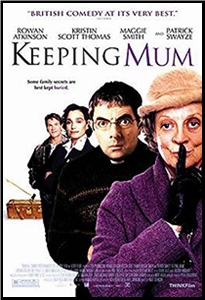Mon 14 Oct 2019
PI Stories I’m Reading: DAVE ZELTSERMAN “Archie on Loan.”
Posted by Steve under Bibliographies, Lists & Checklists , Characters , Stories I'm Reading[7] Comments
DAVE ZELTSERMAN “Archie on Loan.” Short story. Julius Katz & Archie Smith #9 (?). Published in Ellery Queen Mystery Magazine, Sept-Oct 2016.
Julius Katz, as you may already know, is a PI based in Cambridge MA who bears a more than passing remembrance to one Nero Wolfe in many ways but who is quite the opposite in others. He is athletic for one thing, but yet also rather lazy when taking on cases and often has to be prodded into taking on new ones by an assistant named Archie.
Archie, however, is like no other detective you perhaps have ever encountered in a mystery story before. He’s an Artificially Intelligent microcomputer that Katz wears as a tiepin and with whom he is in constant contact. On request Archie can hack himself into almost any computer system anywhere in the world in a fraction of a second, the time often annotated. No worn out pair of gumshoes for this particular Archie.
As it turns out — and this was probably not known before this story came along — Julius Katz has a sister named Julia who is an international spy. Her problem at the moment is that three attempts have been made on her life, and she does not know why. She needs Archie (whom she did not know about before), to not only learn why, but who, and stop him, or them.
A key to this absolutely delightful case is an extremely rare copy of Our Mutual Friend, one inscribed by Charles Dickens himself. I don’t know if Julia Katz appears in any of the later Julius Katz and Archie tales, but she’s certainly an engaging character that I’d like to read about again. Overall, though, if you’re a fan of Rex Stout’s work, then I’m sure these tales (see below) will appeal to you as much as they have to me. Besides the sheer chutzpah of coming up with the characters themselves, the mysteries themselves are very well done as well.
The Julius Katz & Archie Smith series [may not be complete] —
Julius Katz (nv) Ellery Queen’s Mystery Magazine Sep/Oct 2009 (*)
Archie’s Been Framed (nv) Ellery Queen’s Mystery Magazine Sep/Oct 2010 (*)
One Angry Julius Katz and Eleven Befuddled Jurors (ss) Ellery Queen’s Mystery Magazine Jun 2012 (*)
Archie Solves the Case (nv) Ellery Queen’s Mystery Magazine May 2013 (*)
Julius Katz and a Tangled Webb (ss) Ellery Queen’s Mystery Magazine Mar/Apr 2014 (*)
Julius Accused (nv) Ellery Queen’s Mystery Magazine Jun 2014 (*)
Julius Katz and the Case of Exploding Wine (ss) Ellery Queen’s Mystery Magazine Mar/Apr 2015
Julius Katz and the Giftwrapped Murder (ss) Ellery Queen’s Mystery Magazine Dec 2015
Archie on Loan (ss) Ellery Queen’s Mystery Magazine Sep/Oct 2016
Cramer in Trouble (ss) Ellery Queen’s Mystery Magazine Mar/Apr 2017
Julius Katz and the Terminated Agent (ss) Ellery Queen’s Mystery Magazine Jul/Aug 2017
Archie for Hire (ss) Ellery Queen’s Mystery Magazine Nov/Dec 2018
The Julius Katz Collection [paperback, 2014; contains the stories marked (*) above) plus “Julius Katz and the Case of a Sliced Ham,” which may be new]
Julius Katz and Archie [novel; Kindle, 2014, paperback, 2018]


